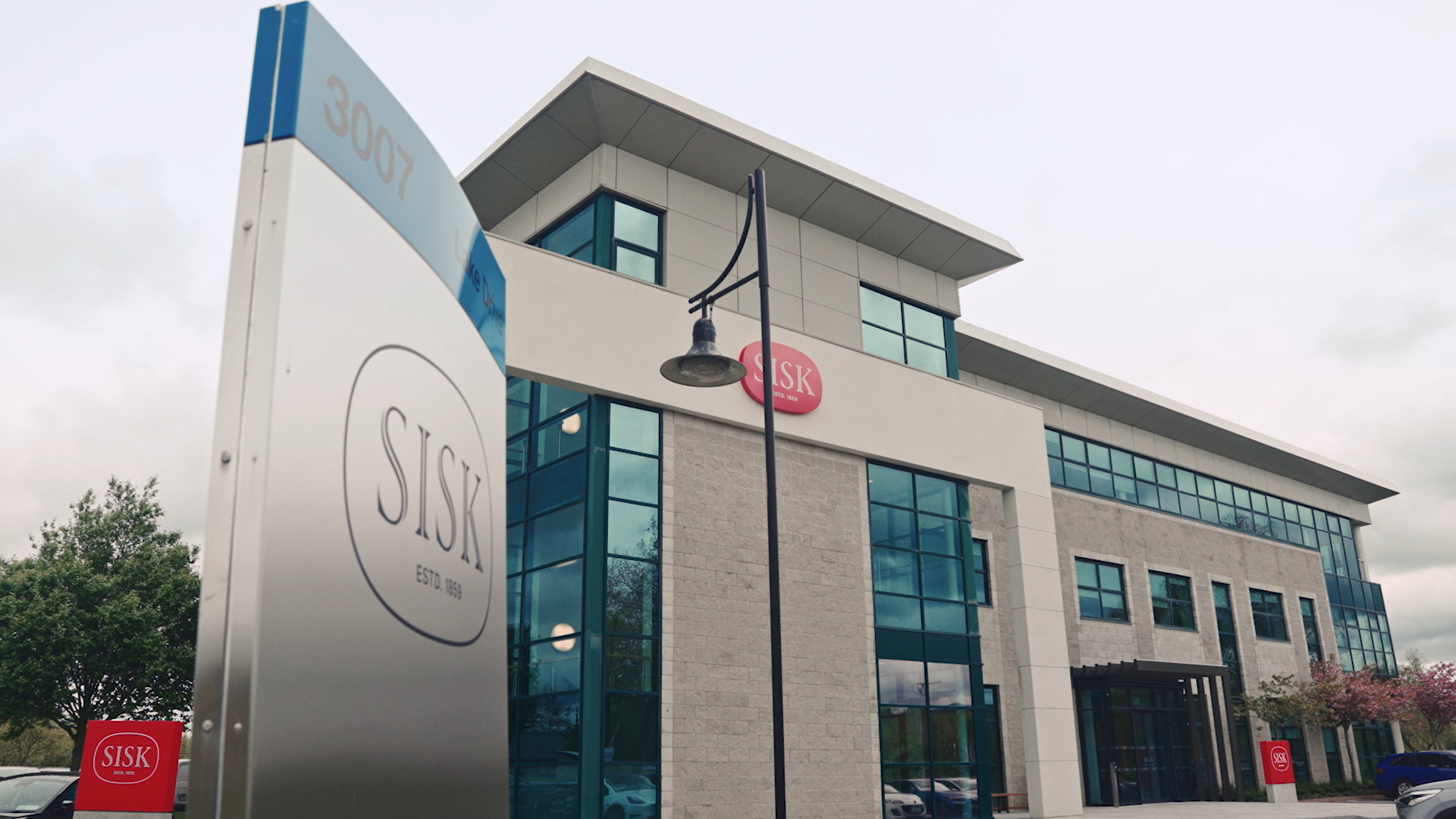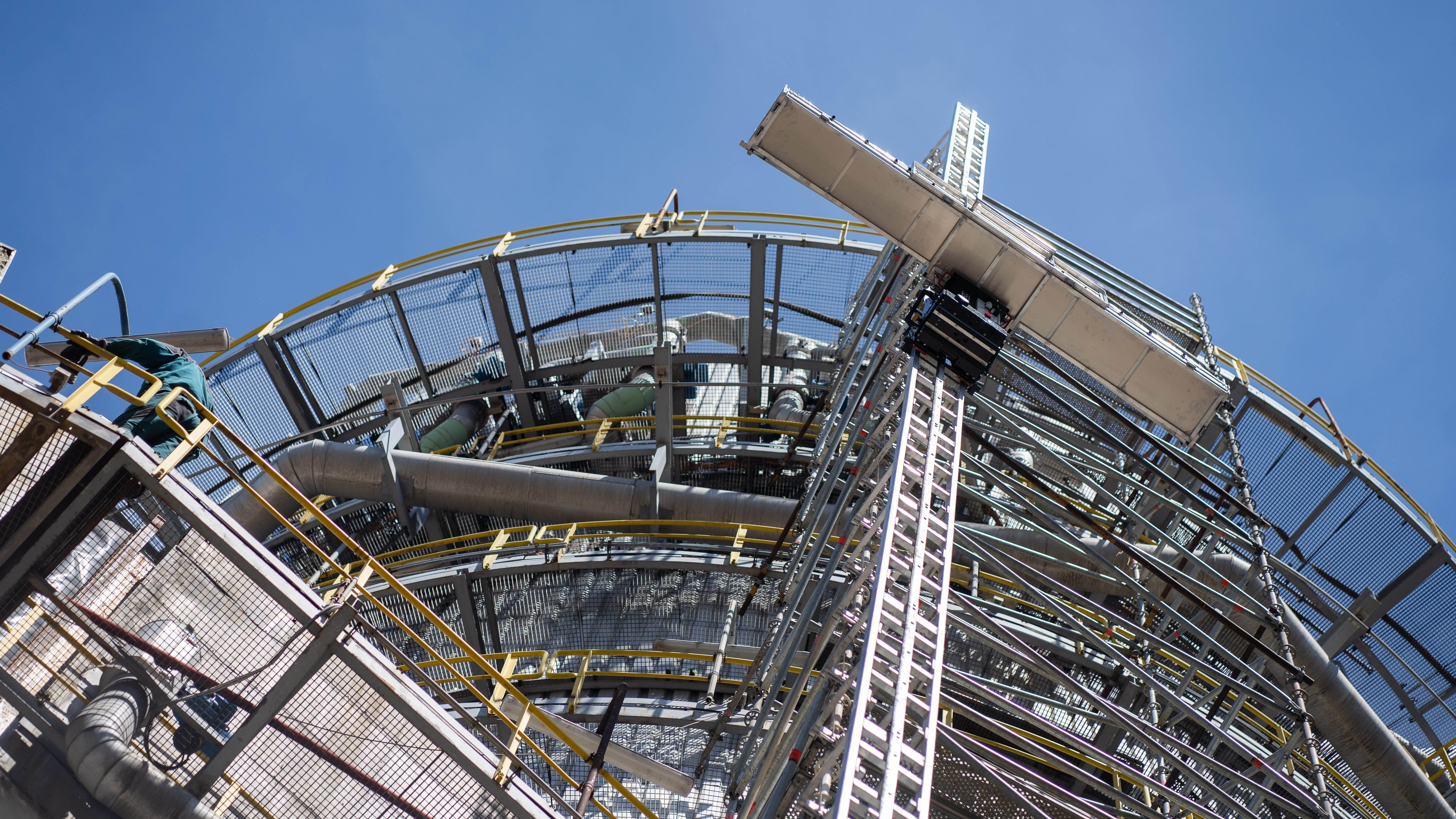A Circular Construction Industry
Worldwide, more than half of all people live in cities. At the same time, buildings are now responsible for 37% of global CO2 emissions. As urbanization continues, this trend will intensify. The construction industry must act and decarbonize its value chain.
Author
Stefan Kaufmann
works as Product Manager BIM Strategy & New Technologies at ALLPLAN, a Nemetschek Company and has various experiences in driving digitalization in the construction industry
This article belongs to the collection Sustainability
To the topic pageWorldwide, more than half of all people live in cities. At the same time, buildings are now responsible for 37% of global CO2 emissions. As urbanization continues, this trend will intensify. The construction industry must act and decarbonize its value chain. The targets are ambitious: by 2050, the entire construction industry should be climate neutral. This means that everyone is called upon to act – architects, construction companies, and facility managers. Software companies must also get involved, because digital solutions create transparency and give those responsible new opportunities to optimize the ecological transformation.
A Comprehensive View of Sustainability
Sustainability in the construction industry means considering the life cycle of buildings holistically and as a cycle. As early as the planning phase, the CO2 footprint can be calculated over the entire life cycle – construction, operation, and deconstruction are analyzed and optimized. Data-supported workflows based on Building Information Modeling (BIM) help in decision-making, provide improved visualization, coordination, and energy efficiency. The fact that the construction industry will be particularly under pressure to achieve climate targets is also reflected in the climate goals of the United Nations and the European Union. Here, the focus is particularly on the energy efficiency of the building stock, the need for sustainable construction and renovation methods and standards, as well as the reduction of waste and the shift towards a circular economy. No wonder, as buildings are responsible for 50% of the consumption of all extracted raw materials, 33% of water consumption, and 35% of global waste. Internationally, there are therefore countless initiatives for greater sustainability that also focus directly or indirectly on the building sector. For example, Denmark has already implemented a strategy for the energy-efficient renovation of its building stock, and Finland is developing measures to promote the circular economy in the construction sector and reformed its land use and building laws. However, waste reduction strategies (Sweden's "Vision Zero Waste") are also affecting the resource-intensive construction sector and initiating change. In Germany, too, the quality criteria for sustainable construction were expanded at the beginning of 2023 and a new government funding program for sustainable new buildings was launched.
Sustainable Data Management with BIM
In optimal, sustainable construction – and especially in the renovation of existing buildings – many criteria must be taken into account: the reduction and avoidance of waste, the resource-efficient use of building materials, CO2-neutral energy generation, the use of renewable raw materials, the recyclability and deconstructability of the building structure, renovation costs, and funding conditions, to name just a few. This is where digital working methods based on BIM are useful. Where does the design stand in terms of sustainability? What is the best way to improve the environmental footprint of a real estate portfolio? Complex questions can be answered more automatically and easily with the help of BIM models. The models also reduce planning errors and improve construction processes. Sustainable data management with BIM helps the real estate and construction industry achieve its sustainability goals. And it does so across all service phases and trades of a building or infrastructure project.
In the planning and design phase, model-based design helps to ensure that all building components can be easily sampled with building materials and their CO2 emissions, and that different construction variants can be generated. This enables comprehensive analyses and simulations before the factory and assembly planning begins. The ecological impact of each building component of the entire project is calculated over its life cycle. Potential improvements are identified and exploited at an early stage. Innovative construction methods with a high proportion of prefabrication and modular construction methods can also be implemented more easily with the help of BIM, as comprehensive 3D modeling ensures that the prefabricated modules are planned and assembled without errors.
In the construction phase, the main benefit of BIM is that all project participants can safely make well-founded decisions through shared access to centrally stored data – thus preventing unnecessary rework and errors. Here, too, prefabrication and modular construction are good real-world examples: with parametric BIM solutions, many steps in detailed planning can be automated and construction variants can be generated quickly. As a result, material consumption can be reduced. In combination with LEAN-based construction scheduling, BIM also leads to more efficient construction site management: Deliveries can be planned and timed so that storage times are kept to a minimum. The entire construction site can also be made paperless: Instead of large and often confusing plans, the teams can work with the help of tablets – and everyone can access the BIM model from wherever and whenever they want and get an overview of the status quo. This not only creates synergies but also increases efficiency, as BIM enables transparent and fast bidirectional communication between the fabricator, construction site, and office. Regular comparison of the BIM models with point clouds quickly identifies quality defects and prevents defects in subsequent trades.
During the operational phase, energy efficiency is a particular focus of sustainability efforts. Here, too, BIM can be used for optimization. The BIM model is taken from the design, if available in suitable quality, or reconstructed from a point cloud and 2D plans. In combination with sensor data from the building services and artificial intelligence, it can be used to optimally plan maintenance, check the plausibility of energy conservation methods and the real-time energy consumption, and optimize the use of space in the building. Structural condition monitoring of buildings is also increasingly being documented with the help of BIM models.
If a building resource passport is linked to the BIM model, the BIM model provides important data on the deconstruction and reusability of installed materials and components at the end of the construction life cycle. The BIM-based building resource passport provides an overview of which materials were used, where, in what quantity and in what quality. Thus, it enables the building to be demolished to be used as a raw material store for future buildings – an important step toward the circular economy in the construction industry.
Working Hand-in-Hand for a Circular Construction Industry
Building Information Modeling offers great added value over the entire life cycle of a building or infrastructure project. This not only increases the efficiency and quality of the built world, but also its sustainability. The end-to-end implementation of digital ways of working such as BIM is necessary to achieve global climate goals – and significantly reduce the carbon footprint of the building sector. This calls for all project partners to work together on sustainable and resilient cities of the future.





